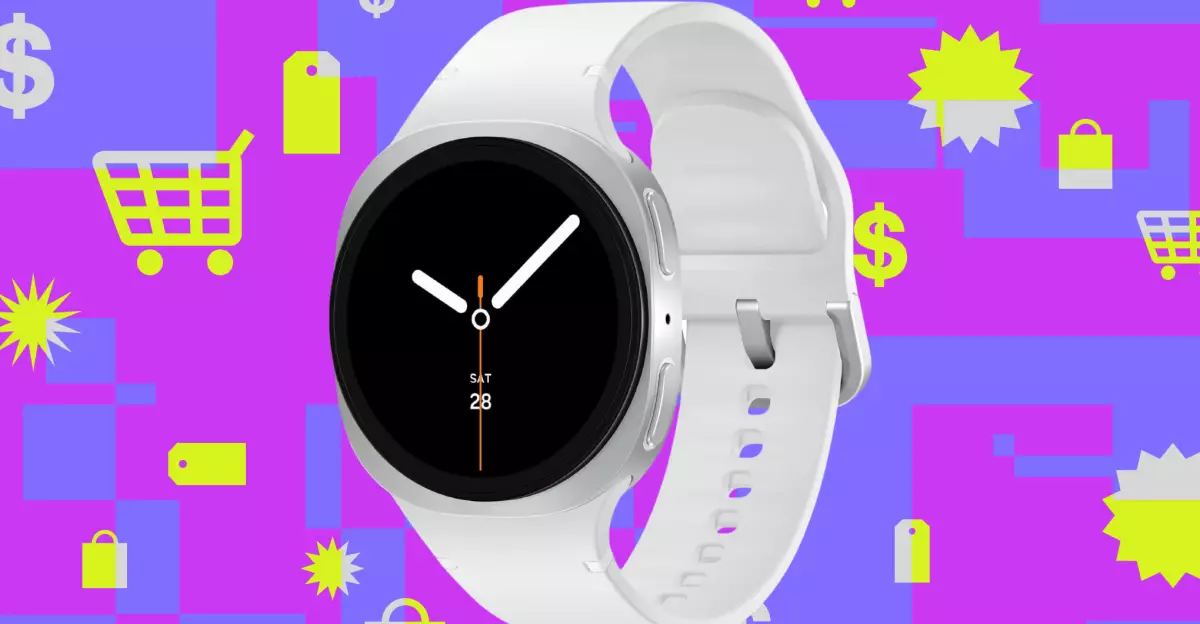In the crowded realm of smartwatches, Samsung’s Galaxy Watch 8 emerges as a standout, redefining how we integrate health, productivity, and style into our daily routines. While it’s easy to dismiss new releases as iterative, Samsung’s latest iteration offers genuine improvements that justify an upgrade—if not a first-time purchase. Its redesign, characterized by a sleek squircle shape, not only lends a modern aesthetic but also enhances comfort and wearability. The slightly thinner profile, achieved through careful engineering, ensures it sits more naturally on the wrist, a subtle yet meaningful upgrade for daily convenience.
What truly distinguishes the Galaxy Watch 8 is its seamless integration with Google’s Gemini AI. The ability to access a sophisticated AI assistant directly on your wrist blurs the lines between wearable technology and personal assistant. Whether you’re checking the weather, managing playlists, or asking for health tips, Gemini makes these interactions effortless. This symbiosis of hardware and AI expands the smartwatch’s role from a secondary device to a central hub of your digital life.
Health-focused features elevate this device beyond mere notifications and fitness tracking. The addition of an Antioxidant Index offers insights into your oxidative stress levels, a novel approach in consumer wearables, although its accuracy requires scrutiny. More practical is the Running Coach, which personalizes workouts based on real-time performance. However, these innovative features are not without flaws—tests reveal that some sensors can be easily fooled by colorful objects, showing that the device’s health metrics still lean toward a balance of advancement and virtual optimism.
Pricing strategies also demonstrate Samsung’s savvy; the recent $50 discount on the 40mm and 44mm models repurposes the existing price point, making the Watch 8 competitive rather than revolutionary. This move positions the device as an appealing choice for current Galaxy users contemplating an upgrade or newcomers seeking a dependable entry into smartwatches. Despite some divisive design choices—namely the shape—its performance and new features make it a worthwhile investment. Nevertheless, the true test remains in its ecosystem compatibility, especially for those invested in Samsung devices or contemplating switching from Apple.
Gaming and Power: A New Era of Budget-Friendly Controllers and Chargers
In the realm of gaming accessories, affordability often comes with compromises, but the GameSir Super Nova Wireless Controller shatters that stereotype. Priced at just under $40, this gamepad is packed with features traditionally reserved for premium controllers. Hall Effect joysticks, renowned for their drift resistance, promise longevity and precision—crucial for serious players. The two-stage Hall Effect triggers and customizable back buttons offer extensive control customization, making it suitable for both casual gaming and competitive sessions.
Moreover, the Super Nova’s flexible connectivity options—wireless via Bluetooth or a 2.4GHz USB-C adapter—ensure compatibility with Nintendo Switch, PC, iOS, and Android devices. The removable face buttons allow users to toggle between Nintendo Switch and Xbox styles, demonstrating thoughtful design tailored for various gamer preferences. The inclusion of RGB lighting adds a dash of personality, making the controller not just functional but also visually engaging.
On the charging front, Ugreen’s 30 Watt Uno Charger exemplifies practicality infused with playful design. Its modest price point, beneath $20, features a single USB-C port capable of fast-charging devices like the iPhone 15, boosting it from 0% to 60% in just half an hour. The charger’s most charming feature is its pixelated faces on a tiny LED display, transforming a simple power brick into a delightful gadget. This blend of form and function underscores how accessories can evoke personality without sacrificing performance, a quality often absent in minimalist tech gadgets.
In the audio domain, JBL’s Tour Pro 3 earbuds demonstrate the intersection of premium experience and value. With an $80 discount, these earbuds become an even more compelling option, offering excellent sound, active noise cancellation, and a particularly user-friendly case with an integrated touchscreen. The ability to control listening modes, check battery life, and switch audio sources via the case’s display enhances convenience, allowing users to manage their audio preferences seamlessly.
What ties all these deals together is the acknowledgment that technology is no longer a luxury but a necessity—yet it should also bring joy and personality into our lives. The affordability and innovation shown by these products reflect a shifting landscape where high performance meets affordability, and fun becomes part of functional devices.
A Critical Perspective on the Hype and Reality of Tech Deals
While the barrage of discounts is undoubtedly attractive, it invites skepticism about the true value these deals offer. Are these discounts genuinely advantageous or merely clever marketing tactics to shift excess inventory? Many of these devices, though feature-rich, sit at a price point where incremental improvements may not drastically impact daily use. For instance, the Galaxy Watch 8’s new health features, while promising, still depend heavily on sensor accuracy—an area where early adopters often face disappointment.
Similarly, gaming controllers with advanced features are fantastic but may appeal predominantly to niche audiences, especially when their affordability is punctuated by trade-offs in build quality or long-term durability. The same goes for chargers like Ugreen’s; while the pixelated face adds charm, it does little to improve core performance. Buyers must be wary of superficial appeal masking basic functionality—a trap common in the fast-paced world of gadget deals.
Moreover, the countdown to better tech may breed a culture of impatience, where consumers are tempted to upgrade prematurely rather than deriving true value from their existing devices. The allure of a discount shouldn’t eclipse the importance of assessing whether the upgrade genuinely enhances lifestyle or productivity. Behind every flashy sale, there’s a need for critical evaluation: does the device integrate well with your current ecosystem? Will it stand the test of time, or is it another fleeting trend?
Ultimately, the current landscape is a battleground of marketing noise and genuine innovation. Savvy consumers must sift through the promotional hype, identifying which deals offer lasting value rather than temporary savings. The truth remains that while bargains are tempting, they must be paired with thoughtful consideration—because in the end, the true power of technology lies in how meaningfully it integrates into our lives, not in how much we save during a flash sale.

